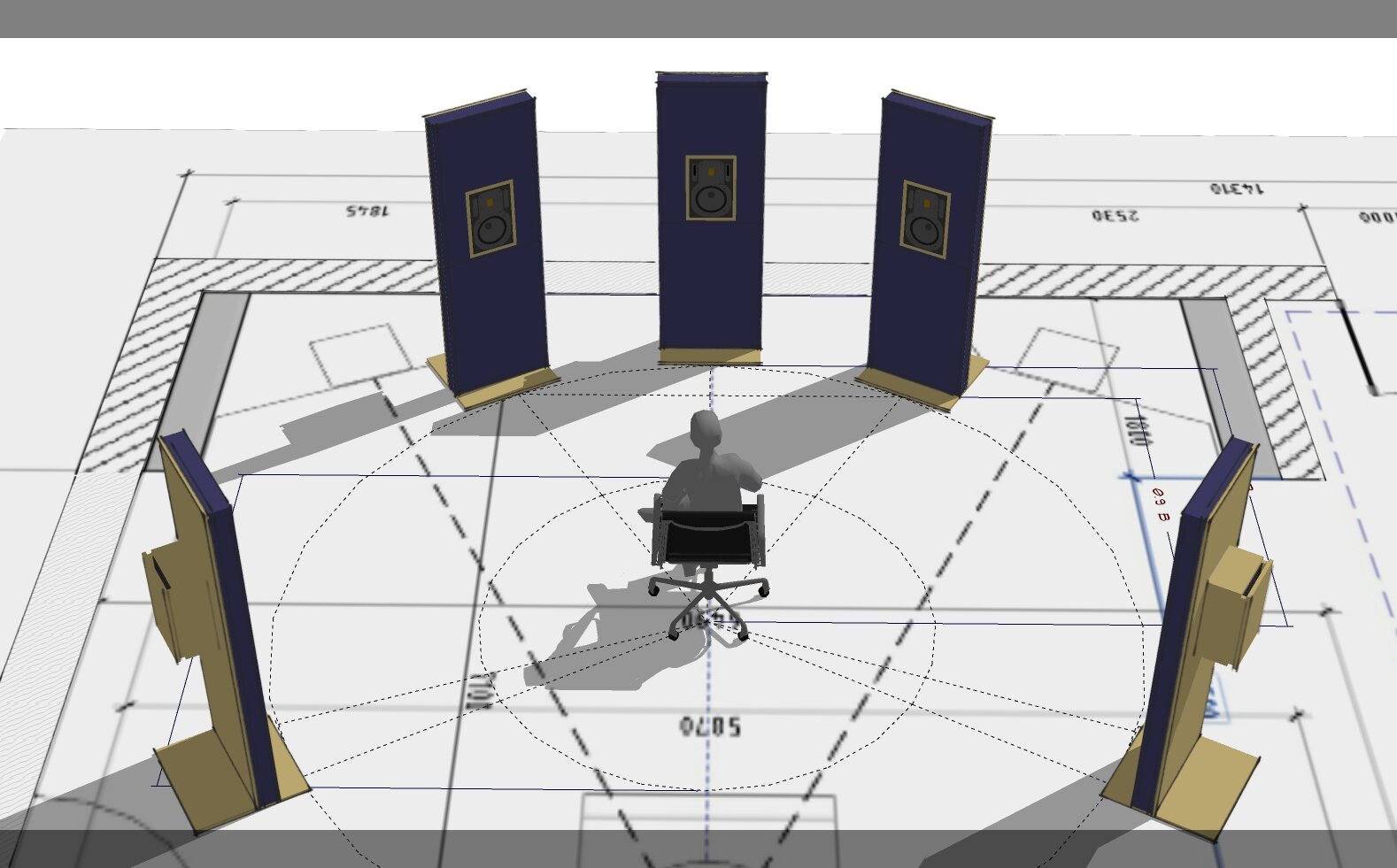-
Posts
2,297 -
Joined
-
Last visited
Everything posted by Glenn Stanton
-

MIDI USB connection/Friendly Name issue
Glenn Stanton replied to Michael Forer's topic in Cakewalk by BandLab
+1 i have an M-Audio USB MIDI hub (4x4) and all my keyboards show up as distinct names: Keystation 49, SP-88, Q49 etc. even my Proteus rack unit shows up. and for USB specific units like my Casio LK which has its own driver show up as well. -

Automatic Instrument Display on Track Selection
Glenn Stanton replied to Canopus's topic in Feedback Loop
is the alternative track you switch to using the same instrument? if not, that would explain why it's not working as expected when you switch tracks... -
you can open the automation lane and find the auto-tune automation parameters, then simply use the tools to edit as needed - on/off, various values, etc. best bet - spend some time reading the manual as Cakewalk is a very powerful DAW and to uncover the features -- you can refer to the large help documentation. here's a link to the automation help: https://www.cakewalk.com/Documentation?product=Cakewalk&language=3&help=Automation.01.html
-
AutoHotkey https://www.autohotkey.com/index.html ?
-
you can simply click on the "+" on the Sends -- add an aux track and make sure the send is post-fader. then add the auto-tune on the desired track. record the aux track. or simply "apply effects" on your process menu (although this is destructive to the audio on that track). or make a copy of the vocal track then apply effects to the copy (making sure the clips are unlinked). or make the track copy (unlinked clips) and apply auto-tune as a region fx (similar to melodyne) and do your edits and then apply. --- > --->
-
there was the issue with phasing as well.
-
any test with the global metering settings? maybe those will be retained for the take lanes?
-

Cakewalk File bloat makes multiple copies of source files
Glenn Stanton replied to Karmic Beats's question in Q&A
that's one of the reasons i use the copy as to another project (appended with ARCHIVE) so i know only the files i want to save are there and i don't screw up (again :facepalm: ) by trying to figure out which files are which ... -

Keystation 49es midi keyboard not working
Glenn Stanton replied to Joe Burns's topic in Cakewalk by BandLab
maybe go to your device manager and uninstall it, then scan for new hardware changes and see if that resets the device driver? -

Cakewalk File bloat makes multiple copies of source files
Glenn Stanton replied to Karmic Beats's question in Q&A
you don't need to but if you're trying to store a clean copy with only the files remaining in the project - i would simply make a copy (save-as w/ copy audio files enabled) into another directory so it's only the related project files. note: i also bounce each track clips to a single clip so all my edits are a single file before copying it - but if you don't bounce them first, i would not check (or i would uncheck) the create one file per clip unless you want more files ? this makes a new project + dir = 17 WAV files versus 66 WAV files in the original audio folder. then i can archive it to my local backup disks and my cloud service. -

Cakewalk File bloat makes multiple copies of source files
Glenn Stanton replied to Karmic Beats's question in Q&A
the edit processes can cause them to be generated. when i have a mostly complete mix, i bounce to clips on the tracks then save the project to a new folder - only the relevant files are then copied. then i remove the older project and audio folder. i use this as a cleanup and archive strategy. -
right-click on any .cwp file and select properties. then click on "Change..." and browse to and select the CW application
-

Keystation 49es midi keyboard not working
Glenn Stanton replied to Joe Burns's topic in Cakewalk by BandLab
maybe do a factory reset on the keyboard? -

Keystation 49es midi keyboard not working
Glenn Stanton replied to Joe Burns's topic in Cakewalk by BandLab
check the usb port you're connecting it to and the driver - it should be class compliant. i have the plain old keystation 49 and it just works. -

bug report I think I came across an interesting bug
Glenn Stanton replied to OddSox's topic in Cakewalk by BandLab
WinDbg Preview -- do a search and you'll find the latest version for download -
technically, a de-esser is a dynamic eq ? just one that has been configured for a specific purpose. and also more like a frequency-limited band compressor... depending on the brand and model...
-

bug report I think I came across an interesting bug
Glenn Stanton replied to OddSox's topic in Cakewalk by BandLab
@Noel Borthwick just did an experiment -- there is definitely a +3db increase when exporting the clips. pan law set to 0db centered created a sine @ 440hz -15db RMS (12-db peak) for 15 seconds .WAV import into CW (drag and drop) -- check levels = -12db export clip = -8.99db (this is the 3db increate) imported the exported clip - as expect now -9db pan law set to -3db sine/cosine imported clip - now -12db now export clip with pan law set to -3db same - +3db added pan law setting has no impact on the export or import of the actual clip. source file Cursor position (Time) 00:00:00.000 Sample value at cursor (dB) -Inf. Minimum sample position (Time) 00:00:00.019 Minimum sample value (dB) -12.000 Maximum sample position (Time) 00:00:00.030 Maximum sample value (dB) -12.000 RMS level (dB) -15.010 Average value (dB) -Inf. Zero crossings (Hz) 440.00 exported clip content: pan law set to 0db center Cursor position (Time) 00:00:00.000 Sample value at cursor (dB) -Inf. Minimum sample position (Time) 00:00:00.019 Minimum sample value (dB) -8.990 Maximum sample position (Time) 00:00:00.030 Maximum sample value (dB) -8.990 RMS level (dB) -12.000 Average value (dB) -Inf. Zero crossings (Hz) 440.00 pan law set to -3db center sine/cosine Cursor position (Time) 00:00:00.000 Sample value at cursor (dB) -Inf. Minimum sample position (Time) 00:00:00.019 Minimum sample value (dB) -8.990 Maximum sample position (Time) 00:00:00.030 Maximum sample value (dB) -8.990 RMS level (dB) -12.000 Average value (dB) -Inf. Zero crossings (Hz) 440.00 -

bug report I think I came across an interesting bug
Glenn Stanton replied to OddSox's topic in Cakewalk by BandLab
in the export dialog you can pick the export type as clips, i used {clipname} in the example - TRACK001 has CLIP001 and TRACK002 had CLIP002, and then exported. clips came out as named and types. note that the clip name is also in the underlying track lane so it may be possible to select a variety of clips from the lanes to export... would presume that if i exported the stereo clip as mono i'd still see the +3db -- so maybe this doesn't solve the problem -- not sure the pan law settings would be applied but conceptually you could set it to -3db center and see. -
if you have Melodyne installed you could try that to see how it works. i've done some instrument pitch changes on guitar and vocals. with care the change is transparent. I have the studio edition so there are features in that version not necessarily available in less expensive ones. i also use it for MIDI extraction so i can replace instruments or vocals with instruments.
-
I generally agree - but my Q802USB has no ASIO driver, and the WASAPI does a decent job, but i've found the ASIO4ALL goes lower latency than the WASAPI and so i use it only to record. when using my main IO (UMC1820) then i use the native ASIO driver. ? the biggest win (for me) was deleting all the bogus drivers installed by applications (some of which were simply rebranded ASIO4ALL) and only having the native WASAPI, my Behringer ASIO, and the ASIO4ALL (rarely used).
-

bug report I think I came across an interesting bug
Glenn Stanton replied to OddSox's topic in Cakewalk by BandLab
you could set the stereo buss to mono then drop -3db. the merging of stereo into a single mono is typically +3db (just the nature of db math...). i recently "re-discovered" this as i was doing some mono checks and accidentally exported as mono. then importing into Ozone the waveform was higher than expected (doubled effectively) and was purely mono... lol. -
the vocals are actually from my original demo and i chopped them up and melodyned the crap out of them to get them to sound reasonably close. i was going to only use them as a reference and re-record them, but after listening to them, i thought, hey - these are kind of quirky in a good way so i'll leave them for now. mainly the only other effect was long delays on the "clean water" section and then reverb as part of the overall room. on the "viking march" at the end, the bom-boms - i used melodyne to drop them low and auto-panned them. i had done that in the demo and it was freakish so i had to keep the concept... update: using my Synth V vocals with background singers as well. in this recording - the instruments are all computer generated with some tweaking, except the solo. i used HookPad, Scaler, patterns, etc to create the tracks, and in HookPad where i used some instruments, i substituted some of those for other sounds. so when i started writing this song (or parts), it as 2016. then a close friend passed in 2018, and as i worked on it, i took some of the things that were part of our life experiences and shaped lyrics around that - our wiccan / earth magic beliefs, drunkeness / etc, blues music, etc and it seemed to stream together. i put the demo together (mainly played live on acoustic guitar and double bass) in 2019 but didn't really record it "proper" until late last year. --- yes i know Quetzalcoatl is mispronounced ?




